Feb. 12 update on COVID-19 in MN: Good trends hold but vaccinations stay flat

Go Deeper.
Create an account or log in to save stories.
Like this?
Thanks for liking this story! We have added it to a list of your favorite stories.
3 things to know:
Positive trends steady on active case counts, hospitalizations
Daily vaccination trend still flat week over week
Gov. Tim Walz loosens restrictions on restaurants, weddings
Updated 3:15 p.m.
Minnesota’s latest COVID-19 data continues to offer plenty of reasons to be encouraged about the path of the pandemic. Key trend lines around the disease remain angled in the right direction — down.
Hospitalization counts, for instance, remain steady at late September/early October levels, with 326 Minnesotans hospitalized as of Thursday and 73 needing intensive care. New hospital admissions remain low relative to their late November, early December surge.
Known, active caseloads ticked up above 8,000 cases, but the trend line remains at levels not seen since late September. New cases reported were a fairly modest 1,058.
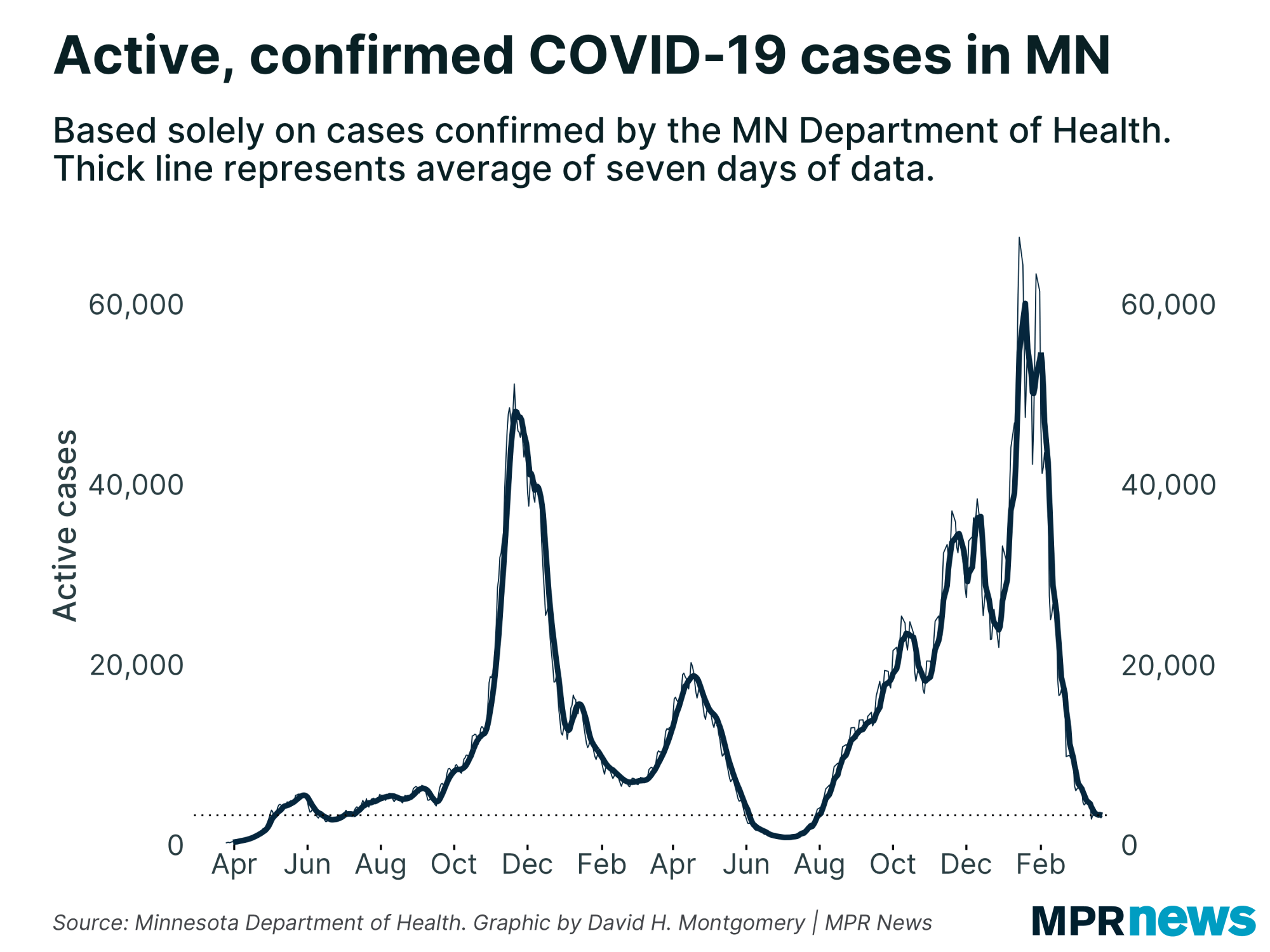
The overall vaccination pace is still flat after falling following a late January surge. The state on Friday reported more than 31,000 new vaccinations, down from the prior Friday. With federal vaccine shipments rising, this could be a lull before an upswing.
Turn Up Your Support
MPR News helps you turn down the noise and build shared understanding. Turn up your support for this public resource and keep trusted journalism accessible to all.
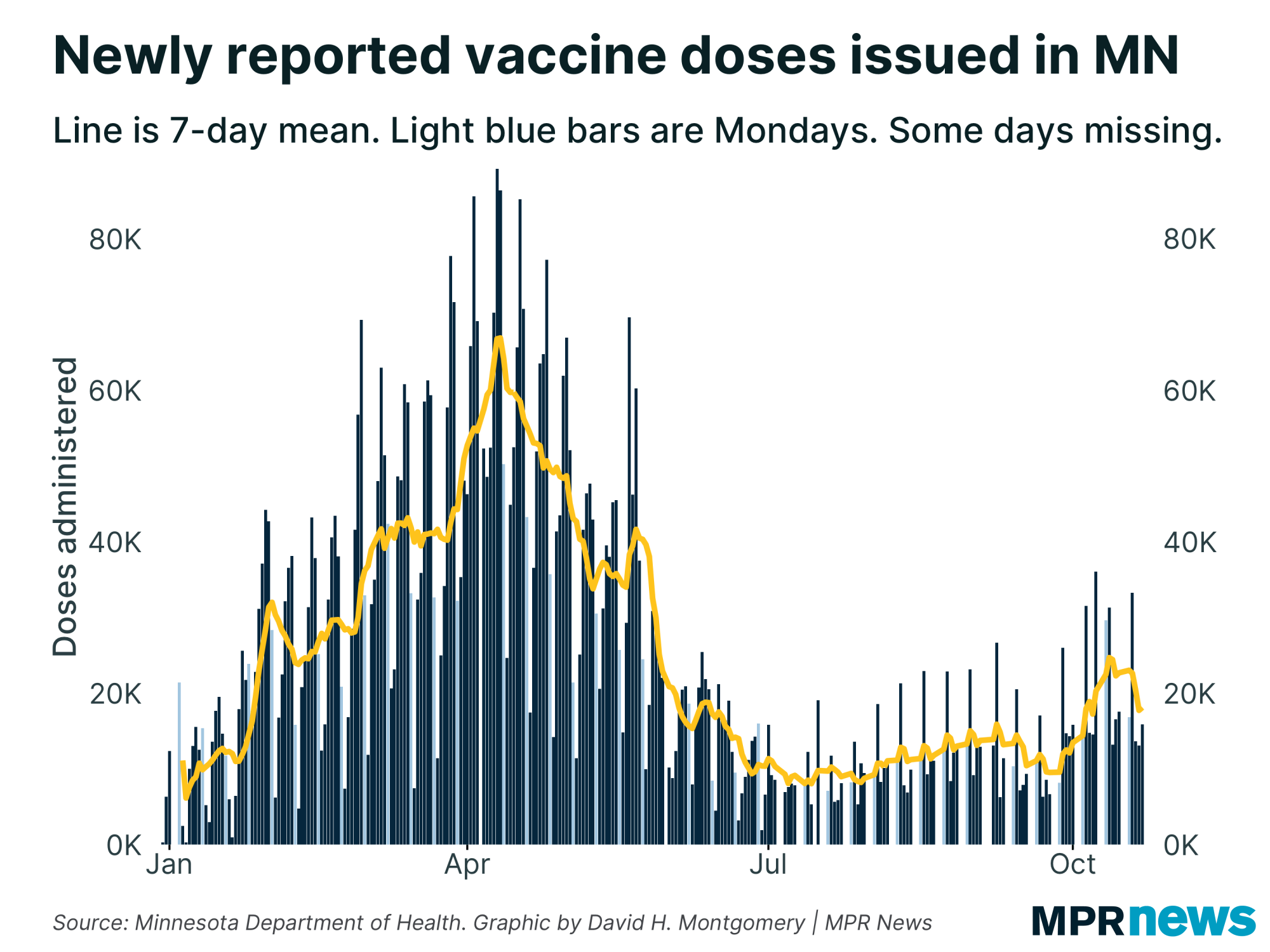
Friday’s data arrived minutes after Gov. Tim Walz OK’d increases in the number of people allowed inside restaurants and at weddings and other private gatherings as the pandemic picture improves and vaccinations appear headed in the right direction.
About 11.1 percent of Minnesotans had received at least one dose as of Wednesday, with about 3.4 percent completely vaccinated. About 30 percent of Minnesotans 65 and older have now been vaccinated.
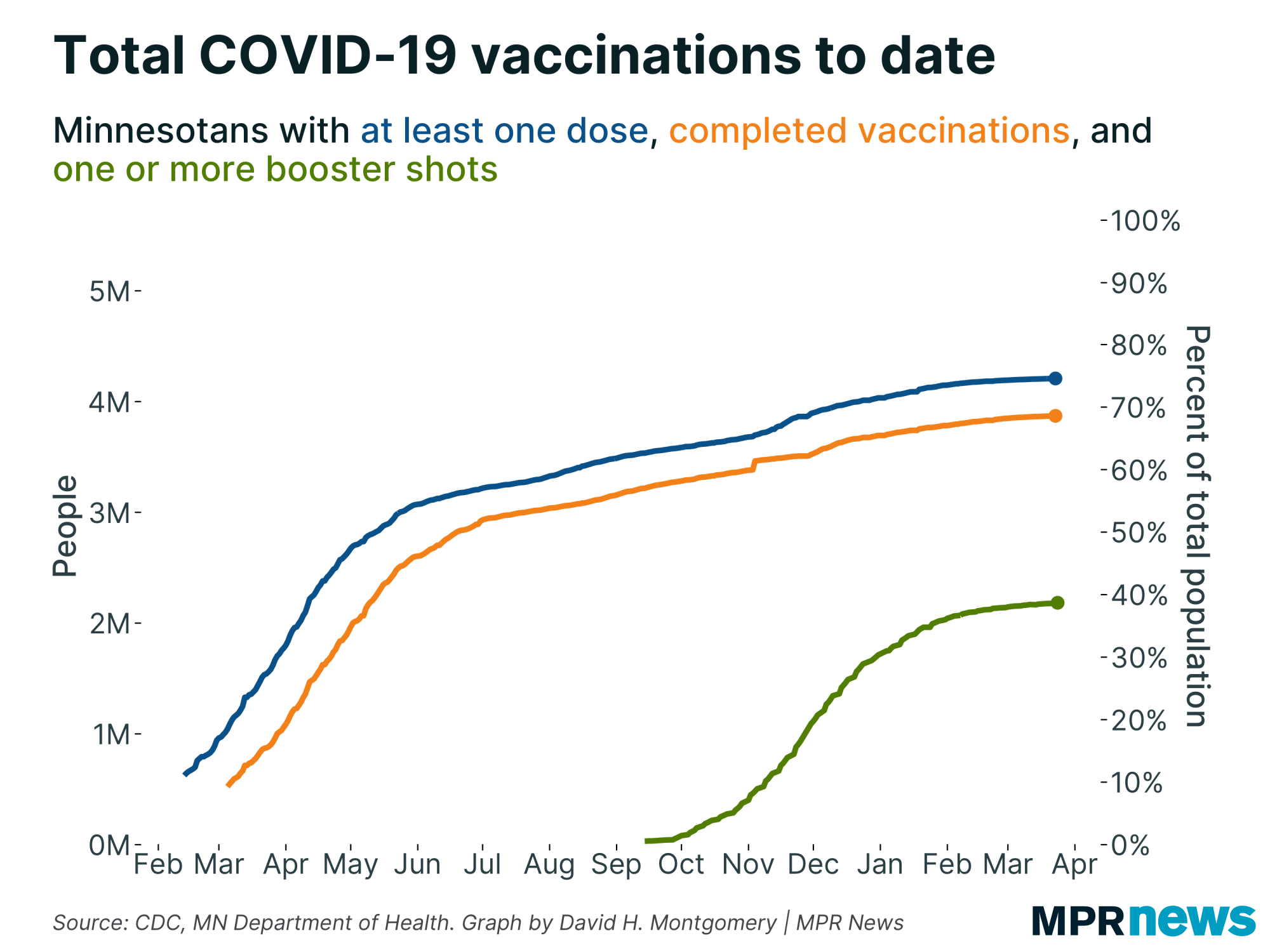
Officials have been emphasizing over the past weeks that the relatively low flow of vaccine supplies from the federal government is the main problem holding back the pace of vaccinations. There’s data to back that up.
The state, though, was down to 28th among states in doses administered per 100,000 people, according to data collected by the federal Centers for Disease Control and Prevention.
Hoping to speed the effort, the Health Department has opened mass vaccination sites in the Twin Cities, Rochester and Duluth and posted information on its online vaccine finder.
Nineteen reported deaths on Thursday raised Minnesota’s toll to 6,362. Among those who’ve died, about 63 percent had been living in long-term care or assisted living facilities; most had underlying health problems.

The state’s recorded 471,851 total confirmed or probable cases so far in the pandemic. About 97 percent of Minnesotans known to be infected with COVID-19 in the pandemic have recovered to the point they no longer need to be isolated.
State officials continue to caution that the hopeful trends are still tenuous, noting the new virus strains arriving in the United States, including two cases of the Brazilian strain and 18 of the U.K. variant in Minnesota.
Cases spread across age groups, regions
People in their 20s still make up the age bracket with the state’s largest number of confirmed cases — more than 89,000 since the pandemic began, including more than 47,000 among people ages 20 to 24.
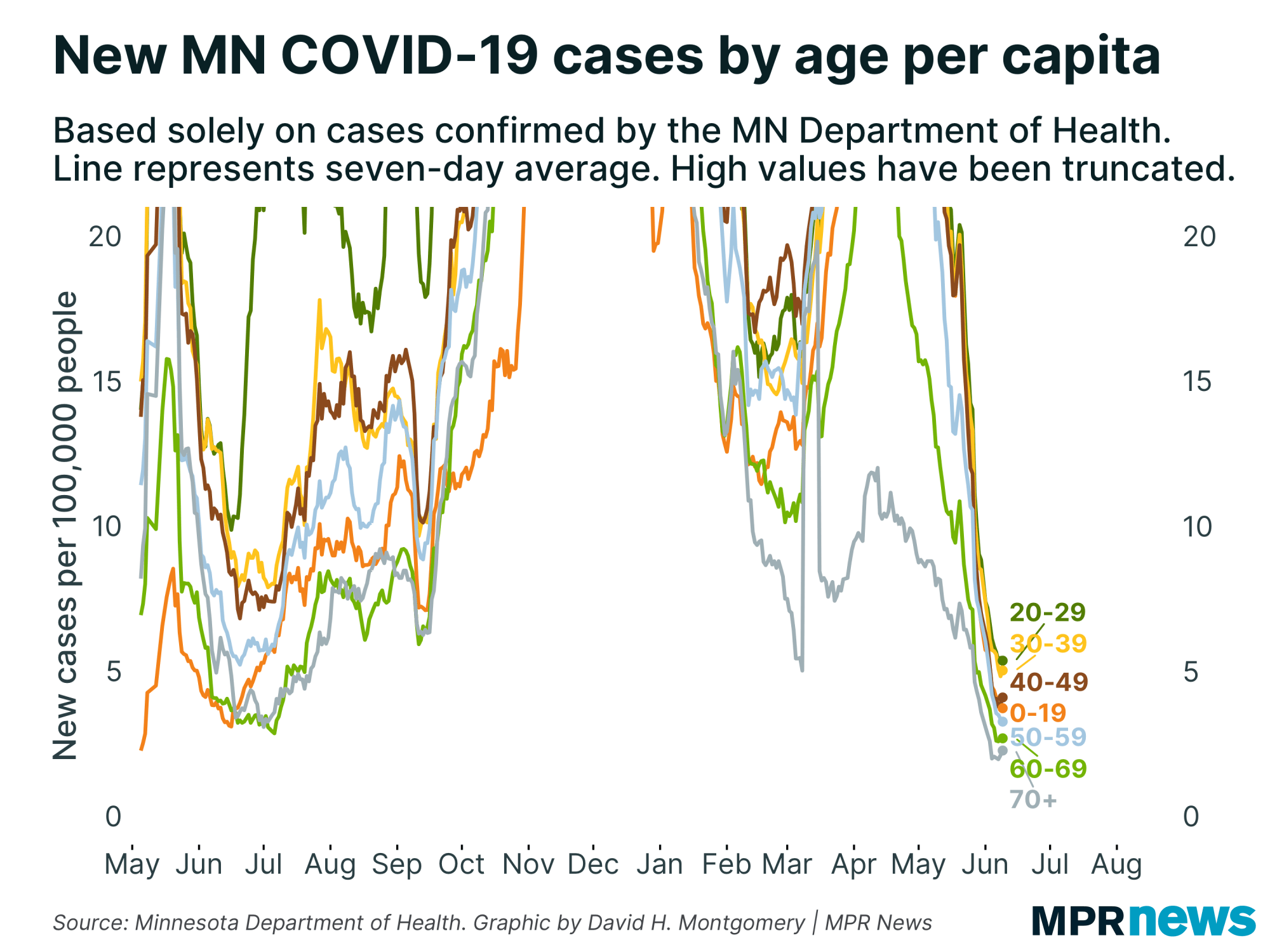
The number of high school-age youth confirmed with the disease has also grown, with more than 36,000 total cases among those ages 15 to 19 since the pandemic began.
Although less likely to feel the worst effects of the disease and end up hospitalized, experts worry youth and young adults will spread it unknowingly to older relatives and members of other vulnerable populations.
People can have the coronavirus and spread COVID-19 when they don’t have symptoms.
Cases are trending down across all regions of the state following a late December, early January blip.
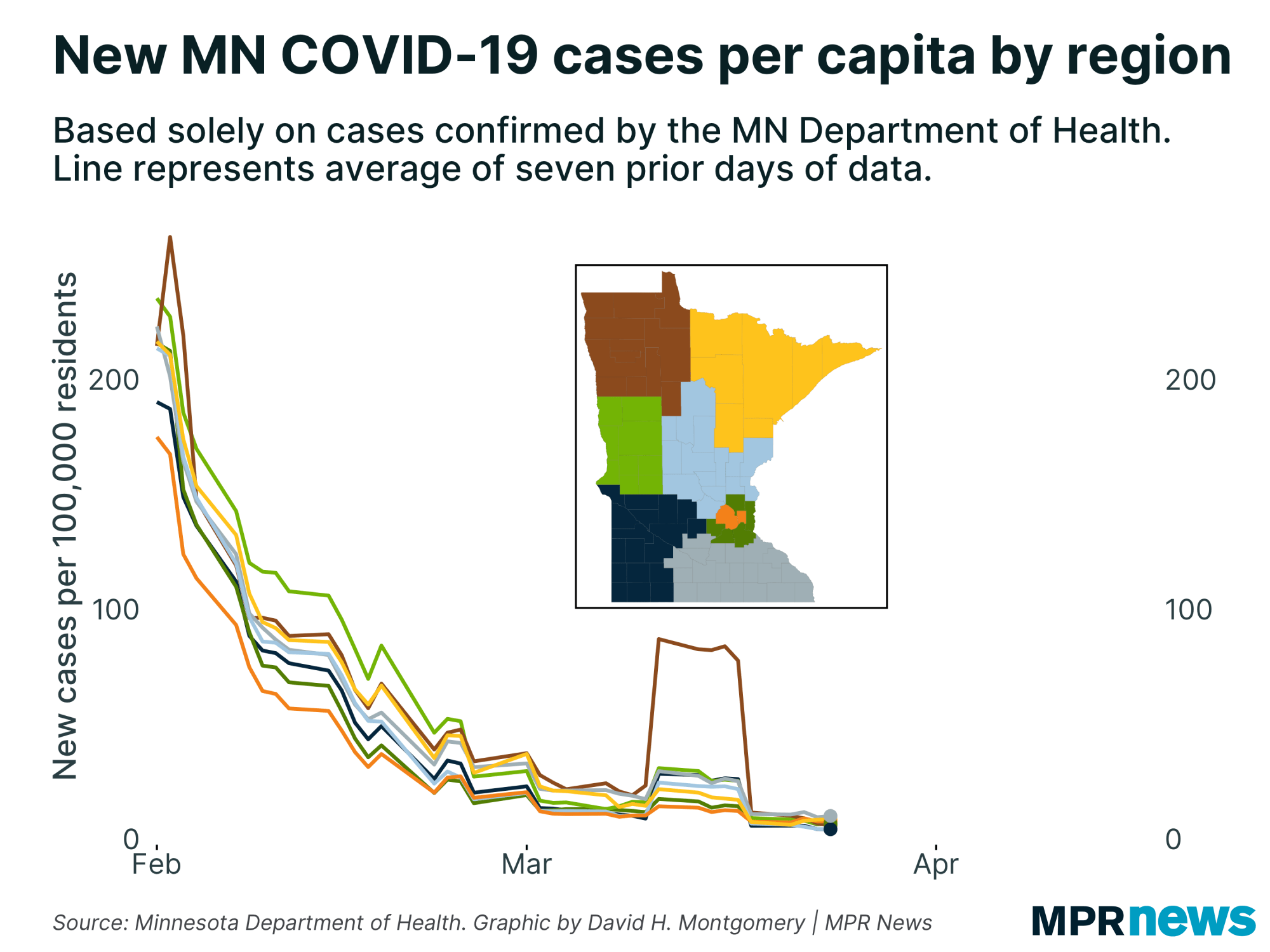
Caseloads still heaviest among people of color
In Minnesota and across the country, COVID-19 has hit communities of color disproportionately hard in both cases and deaths. That’s been especially true for Minnesotans of Hispanic descent for much of the pandemic.
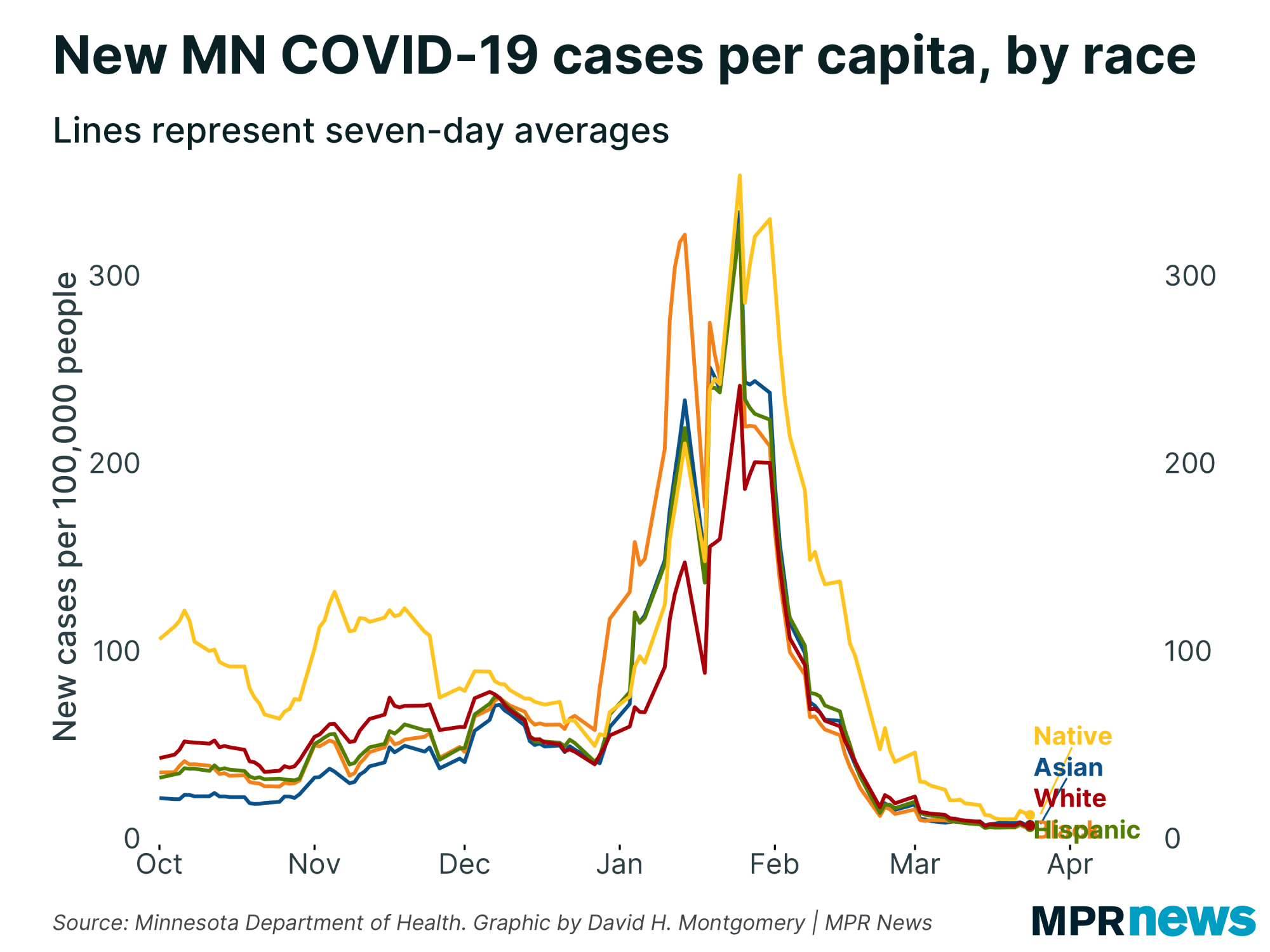
Even as new case counts continue to fall from their late November, early December peaks, the data shows Latino people continue to be hit hard.
Distrust of the government, together with deeply rooted health and economic disparities, have hampered efforts to boost testing among communities of color, officials say, especially among unauthorized immigrants who fear their personal information may be used to deport them.
Health Commissioner Jan Malcolm on Thursday also acknowledged the need to ensure that vaccination opportunities be spread equitably.
Malcolm said the state will release data soon regarding vaccinations, race and ethnicity. Officials say they’re trying to improve the quality of data. Per state law, it's been shared voluntarily, and so may be inconsistent.
‘We’re in a better place right now’
Malcolm and state infectious disease director Kris Ehresmann have spent much of the pandemic warning people the pandemic is not over and could quickly worsen if Minnesotans didn’t stay vigilant.
On Thursday, though, even they said the current situation looks pretty decent.
For example, the seven-day average of COVID-19 tests coming back positive — a key indicator of whether the disease is spreading uncontrolled — has fallen below 3 percent, around where it was in late June. Officials find 5 percent or more concerning.
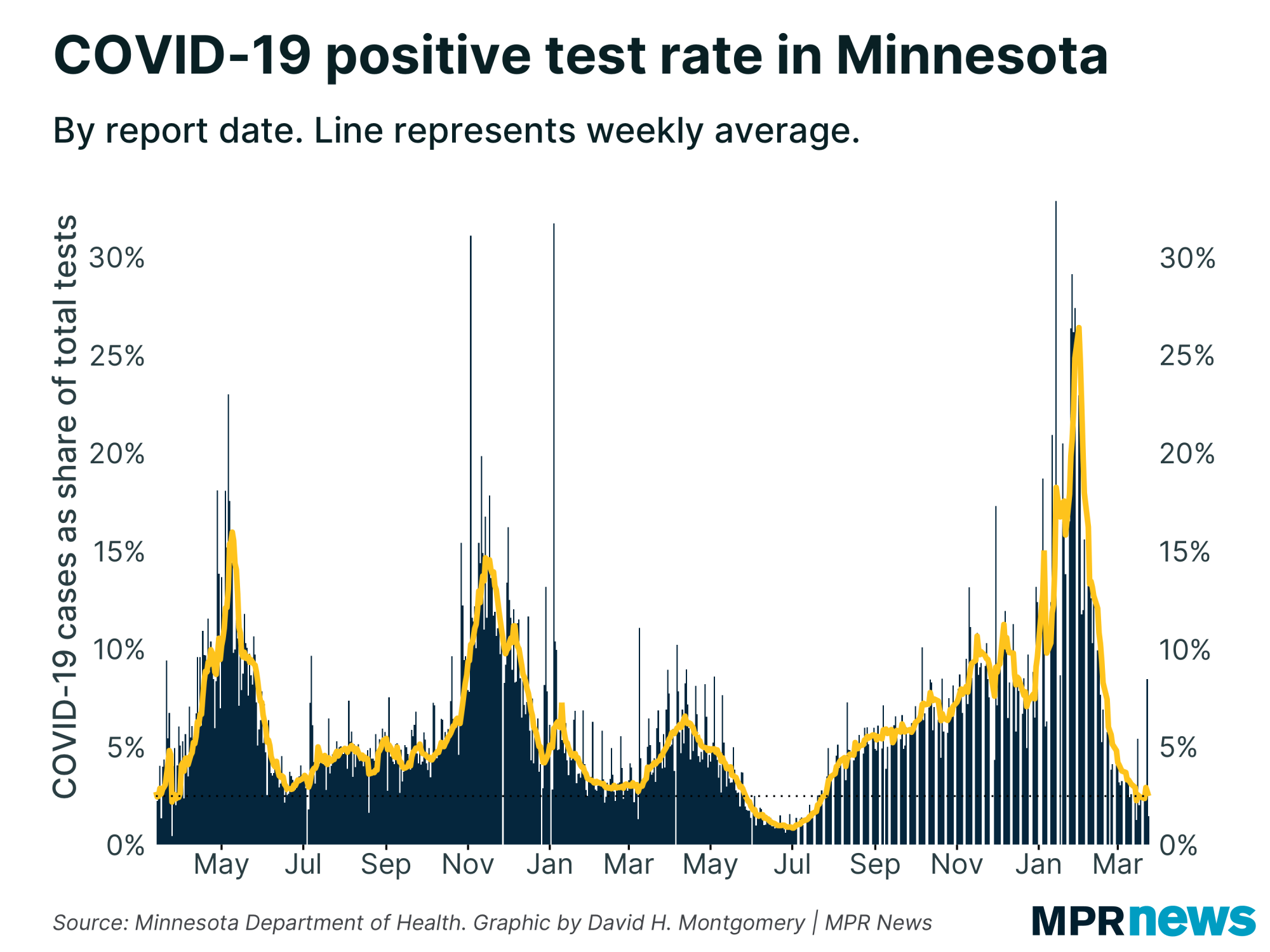
“We’re in a better place right now than we have been for quite some time,” Ehresmann told reporters Thursday in an surprisingly upbeat assessment.
She and Malcolm were quick to point out that strains of the virus from Brazil and the U.K. remain concerning. Ehresmann said it’s still important to wear masks in public gathering spaces, socially distance and otherwise stay vigilant against spread of the virus and its variants.
She also cautioned against unnecessary travel now, despite the subzero weather and the desire by some Minnesotans to head south.
Otherwise, they were perhaps more positive than they have been in months about Minnesota’s location on the pandemic arc. Said Ehresmann: “We’re closer than ever to the end.”
Walz won’t mandate when students return to school
Walz on Friday said he wants all Minnesota students back in classrooms as soon as possible but that he would not set a date requiring the return of in-person learning.
Decisions need to be handled on a case-by-case basis and include local leaders, the governor said during a visit to a school in Roseville.
“It will be individual circumstances just because of the nature of some of the classes,” he said, noting that COVID-19 testing will also be key.
“I taught classes with 42 kids in them and there wasn't a foot between them in that room. That's going to be a factor in this but I do think we're well-positioned,” he said. “We're further along in in-person learning than most places, and I think this is just a way to make sure we don't end up with an outbreak."
More than 96 percent of Minnesota’s school districts have signed up to participate in a COVID-19 testing program the state set up last month and that 41 percent of nonpublic schools and two of four tribal schools are also participating, he added.
COVID-19 in Minnesota
Data in these graphs are based on the Minnesota Department of Health's cumulative totals released at 11 a.m. daily. You can find more detailed statistics on COVID-19 at the Health Department website.
Latest developments
St. Cloud VA starts vaccinating essential workers
The St. Cloud VA Health Care System is now offering the COVID-19 vaccine to veterans who are also front-line essential workers.
The St. Cloud VA has been vaccinating its health care workers, long-term care residents and veterans 75 and older. Now, VA officials are scheduling vaccines for enrolled veterans who are front-line essential workers, regardless of age or health condition. They include first responders, teachers, grocery store, postal workers, corrections officers and those who work in food, agriculture, manufacturing and public transit.
J.D. Anderson, chief of pharmacy at the St. Cloud, said they've seen strong interest among veterans in getting the vaccine.
"I think we had two no-shows in the last two days, even though we've been we've had steady below zero temps,” Anderson said. “We have a very hardy group that is very eager to receive vaccination."
Anderson added that the VA is preparing to move to the next phase, which includes veterans 65 and older, and those with underlying health conditions.
— Kirsti Marohn | MPR News
Walz’s emergency powers extended, again, for another month
DFL Gov. Tim Walz has again extended his emergencies powers to coordinate Minnesota's response to the pandemic.
The latest extension through March 15 means that Minnesota will have been in a peacetime emergency for at least a year.
Walz said fellow Democrats who control the House have been willing to tackle issues such as a statewide face covering mandate. But he said the Republicans who control the state Senate have refused to act, leaving him no choice but to issue executive orders.
"If I won't want hundreds of thousands of Minnesotans to be evicted, if I don't my ability to order PPE and to shift the national guard to give vaccine, all of that would end if the emergency orders that are being used by 49 out of 50 governors are brought back," the governor said.
Walz first signed an executive order last March that allows him to expedite contracts, mobilize the National Guard and make other unilateral decisions to manage the pandemic. In his latest order, Walz said increased vaccination and recent infection trends leave him with hope that the pandemic is beginning to wind down.
— Brian Bakst and Mark Zdechlik | MPR News
Top headlines
Walz OKs more guests at weddings, private gatherings as COVID ebbs: People planning wedding receptions and other group celebrations got some good news Friday when Gov. Tim Walz raised his limit on the number of people who can attend private indoor gatherings from 10 to 50.
Minnesota lawmakers wrestle with what follows COVID-19 eviction rule: A pandemic-related executive order has put most renter evictions on hold, but Minnesota lawmakers are starting to sort through what will be put in its place and how to avoid a surge in removals.


